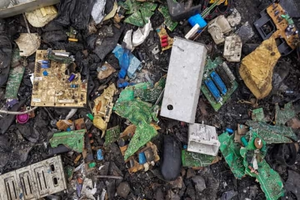Bengaluru, 14 February (IANS). India’s e-waste is providing a big economic opportunity. A report is a report claiming an estimated economic capacity of $ 6 billion in the material recovered through metal extraction.
This information was given on Friday quoting a report. India is now the world’s third largest e-waste producer after China and the United States. The report by Redseer Strategy Consultants said that the country’s e-waste doubled from 2 million metric tons (MMT) in FY14 to 3.8 MMT in FY 2024, caused by urbanization and increasing income.
The consumer segment, mainly by homes and businesses, contributed about 70 percent of the total e-waste in FY 2024.
A large trend in e-waste production is a change in intensity of material. While the equipment is becoming more compact and lighter. The amount of goods abandoned is increasing, requiring efficient recycling strategies.
Jasbir S., partner of Redseer Strategy Consultants Juneja said, “The amount of e-waste is expected to increase in the coming years. The increasing value of metal in e-waste is a big opportunity to increase recovery efficiency for India and establish itself as a leader in sustainable metal extraction Presents.”
Currently, only 16 percent of the consumer e-waste in India is processed by the formal recycler. Despite the estimates of 17 percent CAGR increase in the formal recycling sector by FY 2035, it expects only 40 percent of India’s e-waste handle.
This sector faces strict competition from informal players, which take advantage of low compliance costs and comprehensive collection networks.
Meanwhile, 10–15 percent of e-waste houses have a store and 8–10 percent ends in landfills, reducing recycling efficiency.
To create a Sustainable E-West Management Ecosystem, the Government of India has introduced Expended Producer Responsibility (EPR) Framark.
The EPR has since developed into an essential system with a collection goals defined to producers. However, there are gaps due to low minimum EPR fee and inadequate formal recycling capacity.
Strengthening the formal recycling network is the key to improving metal recovery rate and maximizing returns.
This may reduce India’s metal import demand by $ 1.7 billion, while a continuous supply of high-value recycled metal can be ensured.
-IANS
SKT/KR










